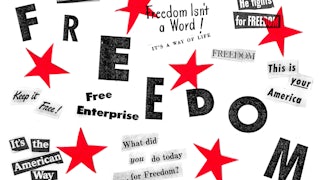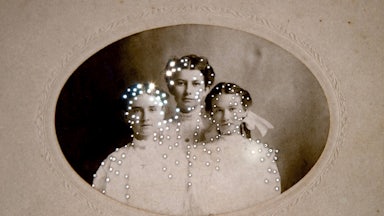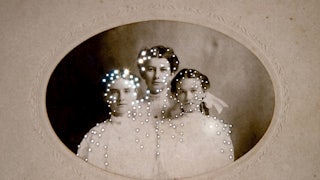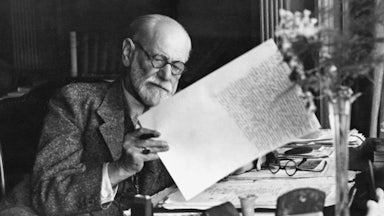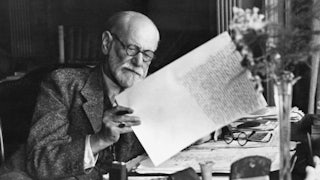In the mid-1990s, an American college student named Max Perelman was traveling through Sichuan, China, more than 1,500 miles from Beijing. While holed up in the southwestern province during the winter months, he encountered a group of Tibetan travelers heading to their capital, Lhasa. The group embraced the young American, sharing food from their rucksacks, perhaps over a fire or in a hostel. The Tibetans had apparently never traveled far from their village before nor had they seen technology like Perelman’s camera. Yet at some point in the conversation, one of the Tibetans turned to Perelman and asked: How is Michael Jordan doing?
That these Tibetan travelers in rural China not only knew about an American sports league but also followed one of its stars and his team—the “Red Oxen,” as the Chicago Bulls are known in Asia—reveals a defining feature of the contemporary international order: The rest of the world is glued to the United States. Foreigners follow American news stories like their own, listen to American pop music, and watch copious amounts of American television and film (in 2016, the six largest Hollywood studios alone accounted for more than half of global box office sales). Sometimes the attention cast toward American culture comes at the expense of foreigners knowing about their own countries. Canadians, a 2008 study found, tend to know more about American history than about their own national history.
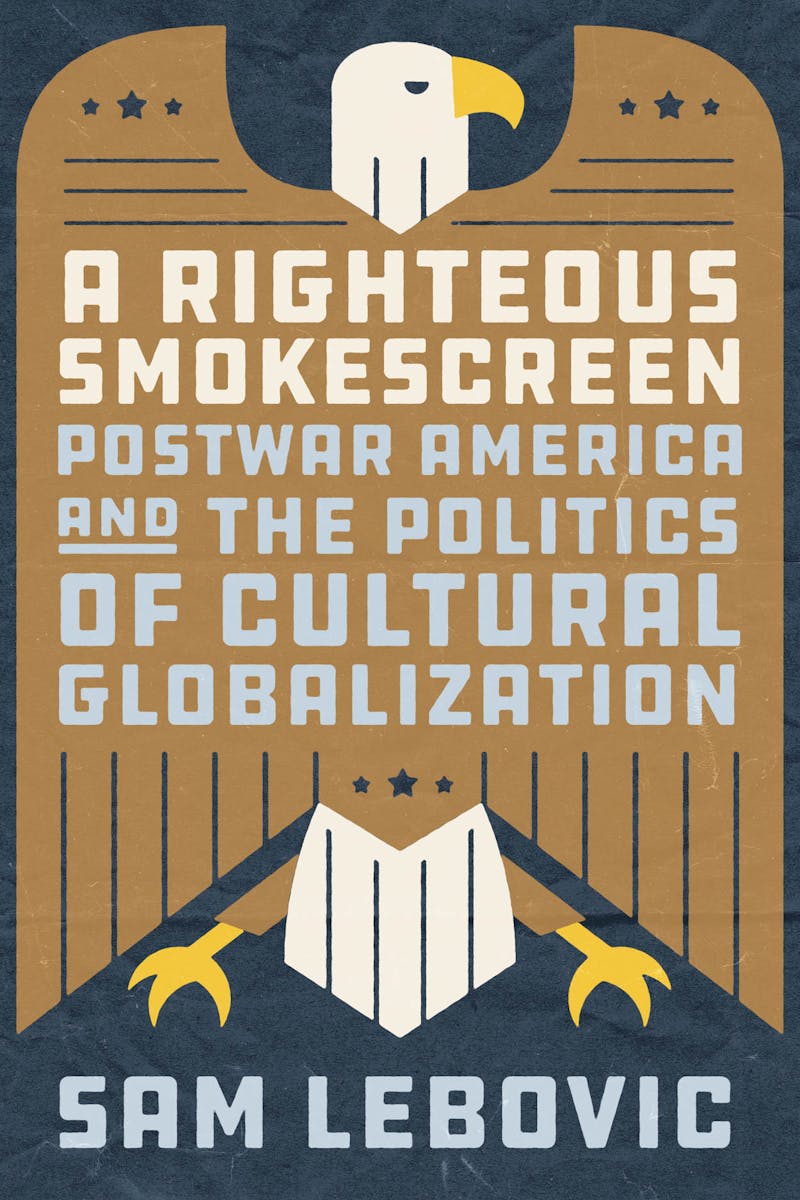
But that’s only half the story. Americans, too, stick to the U.S. The list of the 500 highest-grossing films of all time in the U.S., for example, doesn’t contain a single foreign film (Crouching Tiger, Hidden Dragon comes in at 505th, slightly higher than Jerry Seinfeld’s less-than-classic Bee Movie but about a hundred below Paul Blart: Mall Cop). Another measure of parochialism is the percentage of Americans who have a passport, a number that is drastically lower than in many other countries in the global north. Compared to 66 percent of Canadians and 76 percent of U.K. citizens, only about four in 10 Americans have a passport and can therefore travel abroad.
American parochialism can become American ignorance, a condition that has long frustrated geography teachers in the U.S. and delighted late-night talk show hosts. (Take a cringe-filled stroll through YouTube’s vast catalog of segments such as Jimmy Kimmel’s “Can You Name a Country?” in which several random passersby in Los Angeles fail to identify a single country on a world map.) But this lack of familiarity with the world beyond U.S. borders has also had dangerous consequences, for both the U.S. and the world. Ignorant of local condiations, American policymakers have made disastrous assumptions—the conflation of Al Qaeda with Saddam Hussein comes to mind—and leapt into war.
How did this happen? How did cultural globalization in the twentieth century travel along such a one-way path? And why is the U.S.—that globe-bestriding colossus with more than 700 overseas bases—so strangely isolated? The answer, Sam Lebovic’s new book, A Righteous Smokescreen: Postwar America and the Politics of Cultural Globalization, convincingly argues, largely comes down to American policy in the middle decades of the twentieth century.
Looking over the planetary wreckage of World War II from its new perch as the leading superpower, the U.S. promised to build a new world—an interdependent, liberal international order. A free world. To this end, it pieced together a novel system of international organizations, including the International Monetary Fund, the World Bank, and the interlocking agencies and arms of the United Nations, that would bind together nations and forestall future conflict. It would be a global village.
One of the village’s founding principles was the free flow of information and culture. Villagers, it was imagined, would freely travel, trade, and communicate with one another, cultivating international understanding and locking in mutually advantageous bonds. This phrase—usually truncated to just “the free flow of information”—generated a lot of buzz in the 1940s. American press barons championed it. Congress passed laws in support of it. And diplomats became its evangelicals. In 1946, President Harry Truman proclaimed to the U.N. General Assembly that “a concerted effort must be made to break down the barriers to a free flow of information among the nations of the world.” If there was a “liberal consensus in postwar American politics,” Lebovic calmly asserts, “this was probably it.”
A lot of the world agreed—who isn’t a fan of freedom?—at least in principle. Carlos Romulo, the legendary Philippine diplomat and journalist who had uncovered Japanese atrocities in his country, went so far as to call freedom of information the “touchstone of all the freedoms to which the UN is consecrated.” World War II had been horrifying in scale and severity; information barriers were believed to have played a part. Japan’s and Germany’s bids for autarky had insulated their citizens from global currents, incubated aggressive nationalism, and, from the perspective of American policymakers, driven the world into war.
But when 600 or so journalists, media magnates, and diplomats arrived in Geneva in 1948 to draft the press freedom clauses for both the U.N. Declaration of Human Rights and the International Covenant on Civil and Political Rights, definitional difficulties abounded. Between what the U.S. meant by “freedom of information” and what the rest of the world needed lay a vast expanse.
For the American delegates, the question belonged to the higher plane of moral principle. The delegation wanted to extend into the international sphere the classic liberal notion of press freedom, which would prohibit governments from censoring the news and enshrine the rights of journalists to access sources and to dispatch the news across borders.
But representatives of other states had more earthly concerns. The war had tilted the planet’s communications infrastructure to America’s advantage. In the late 1940s, for example, the U.S. consumed 63 percent of the world’s newsprint supply; to put it more starkly, the country consumed as much newsprint in a single day as India did over the course of a year. A materials shortage would hamper newspaper production across much of the world into at least the 1950s (though this did provide the fringe benefit of enabling political interference with the press: The CIA supplied Italian anti-Communist newspapers with newsprint in the lead-up to the 1948 election, while the U.S. occupation administration in Japan cut the allocation of newsprint to local Communist newspapers). The war had also laid low foreign news agencies—Germany’s Wolff and France’s Havas had disappeared entirely—and not a single news agency called the global south home. At the same time, America’s Associated Press and United Press International both had plans for global expansion, leading The Economist to note wryly that the executive director of the AP emitted “a peculiar moral glow in finding that his idea of freedom coincides with his commercial advantage.”
Back in Geneva, delegates from the global south pointed out these immense inequalities. S.A. Brelvi of India called for the wealthier nations to equitably allocate the “supplies of physical facilities and technical equipment for the dissemination of information between all countries.” But the American delegates refused the idea that global inequality itself was a barrier to the flow of information across borders. Besides, they argued, redistributive measures violated the sanctity of the press. The U.S. was able to strong-arm its notion of press freedom—a hybrid combining the American Constitution’s First Amendment and a consumer right to receive information across borders—at the conference, but the U.N.’s efforts to define and ensure the freedom of information ended in a stalemate.
The failure to redistribute resources, the lack of multilateral investment in producing more balanced international flows of information, and the might of the American culture industry at the end of the war—all of this amounted to a guarantee of the American right to spread information and culture across the globe.
The postwar expansion of American news agencies, Hollywood studios, and rock and roll bore this out. The number of countries that the AP sold news to, for example, jumped from 38 in 1944 to 70 in 1952, which meant that more and more foreigners received an American spin on world events. Meanwhile, the State Department and the American film industry worked together to dismantle other countries’ quota walls for foreign films, a move that consolidated Hollywood’s already dominant position (on the demand side, foreigners found the glamour and glitz of Hollywood alluring, as American films provided a technicolor contrast to the austere, bombed-out conditions of postwar reconstruction). By 1949, American films made up around half of the European and Asian markets, 62 percent of the African market, 64 percent of the South American market, and three-quarters of the Central American and Pacific markets. The rest of the world was increasingly hooked on American culture.
The story of how the U.S. came to dominate global culture—the French called it “coca-colonization”—is one that has been told before. The focus of A Righteous Smokescreen is broader. It is a study of both sides of the globalization ledger: As the U.S. exported its culture in astonishing amounts, it imported very little. In other words, just as the U.S. took command as the planetary superpower, it remained surprisingly cut off from the rest of the world. A parochial empire, but with a global reach.
Lebovic picks apart the lofty rhetoric of reciprocity—especially the ambiguity-addled “free flow of information”—by focusing on what he calls “quotidian world-ordering.” Examples include visa regulations, civil aviation treaties, and educational exchanges, all of which constituted the very processes that laid and limited the transnational paths that information and culture traveled along. Although Lebovic’s claim that most scholars of this period study more seemingly grandiose geopolitical problems is a bit hyperbolic—consider Daniel Immerwahr’s work on the international battle over screw-thread standards or Arissa Oh’s research on the origins of international adoption in the early Cold War—his approach is wildly innovative and helps us dramatically rethink the postwar U.S. and the limits to the world order it helped construct. Containment, Lebovic shows, wasn’t just a territorial strategy committed to holding back Soviet expansion into Europe and Asia. Rather, it began at the American border and it involved policing the flow of people and ideas that were potentially inimical to the American status quo (this form of containment caught a much wider array of ideologies than just Soviet communism in its net). An Iron Curtain, to rejig Churchill’s famous speech about Soviet policies in Eastern Europe, had descended around the U.S.
This closer-to-home Cold War drapery can be seen in the American national security state’s efforts to block out “propaganda.” Throughout most of the second half of the twentieth century, Americans had to seek government approval to purchase magazines, books, and even stamps from China, North Korea, Cambodia, Cuba, and Vietnam. In the 1950s, officials in the American Post Office and the Department of Justice scoured mail for Communist propaganda. An untold number of parcels—untold because for several years of the program they didn’t have to notify would-be recipients that the government had decided to destroy their mail—never arrived at their American destination. But determining what was and wasn’t propaganda was a less-than-scientific procedure, not least because officials weren’t always fluent in foreign languages (one bureaucrat employed a Russian-English dictionary). A graduate student, for instance, never got the German edition of Karl Marx’s correspondence. But copies of a pamphlet authored by a British member of parliament about the 1954 American-orchestrated coup in Guatemala also didn’t get through the border. This form of censorship sealed Americans off from much of the world and even from their own country’s policies abroad.
But even without direct state interference, American culture had inward-looking tendencies, many of which preceded the 1940s. The media ecosystem in particular, Lebovic writes, constituted an “Americanist echo chamber.” Few of the films shown in American cinemas were foreign (largely a result of the Motion Picture Production Code, which the industry began imposing on itself in 1934; code authorities prudishly disapproved of the sexual mores of European films). Few television programs came from abroad (about 1 percent, in fact, in the early 1970s—compared to 12 percent in Britain and 84 percent in Guatemala). Few newspapers subscribed to foreign news agencies. Even fewer had foreign correspondents. And very few pages in those papers were devoted to foreign affairs. An echo chamber indeed.
In-person contact with foreigners was limited, too, thanks to travel controls. A racial-quota immigration system built in the 1920s—though borrowing heavily from earlier legislation that excluded Chinese immigrants—made it nearly impossible for Africans, Asians, and many Europeans to immigrate to the U.S., plunging immigration levels to historic lows and thereby severing potential ties with the rest of the world. In 1910, nearly 15 percent of the American population had been born overseas, but by 1960, that portion shrank to only 5.4 percent. Similarly, bureaucrats in the burgeoning national security state kept a variety of radicals from entering and leaving the country. Since World War I, foreign anarchists, Communists, and others—ranging from German spies and saboteurs to Black internationalists—found the gate to the U.S. bolt-locked. Likewise, Americans whom the State Department identified as holding so-called “alien” beliefs were barred from the exits. The border was a two-way ideological filtration device.
The start of the Cold War tightened enforcement, as the travails of two artists trying to pass through the border indicate: In 1957, the Museum of Modern Art in New York hosted a retrospective exhibition on the seventy-fifth birthday of Pablo Picasso, who, in his fifties, had turned to communism. Meanwhile, on the other side of the planet, Moscow hosted its own exhibition marking the seventy-fifth birthday of another artist, Rockwell Kent, a now mostly forgotten American painter whose work celebrated the role immigrants played in American history. Two exhibitions, one in the U.S., the other in the Soviet Union: Yet neither artist could attend their own exhibition because of American border policies. The State Department had denied Picasso a visa back in 1950 on ideological grounds, and it refused to issue a passport to Kent because of his alleged sympathies for communism.
High-profile figures were not the only people who had trouble entering and exiting the country (though, to be sure, there were many high-profile figures: Charlie Chaplin, Pablo Neruda, Gabriel Garcia Márquez, Linus Pauling, Paul Robeson, W.E.B. Du Bois, just to name a few). So-called “area restrictions” forbade all Americans from traveling to countries in the Communist bloc. And in the 1940s and ’50s, hundreds or even thousands of Americans—more precise data from the innards of the national security state is rather difficult to come by—were denied passports and many, many more never thought to apply for one in the first place, out of fear of what a background check might turn up. In the other direction, would-be immigrants and visitors were turned away in droves (about half of all foreign scientists who sought to enter the U.S. in the early postwar years encountered visa difficulties).
The consequences of the State Department’s restrictions on border crossings—along with the provincialism of American media and the federal government’s efforts to eliminate foreign propaganda—were far-reaching. They reduced the flow of information and culture from much of the rest of the world to a trickle. This was a realization that William Worthy astutely made at the time. To combat “Washington’s propaganda mills,” the Black journalist did on-the-ground reporting in Cuba and North Korea—countries that Americans were prohibited from visiting. In response, his passport was withdrawn from 1957 to 1968, an experience memorialized in the lyrics of Phil Ochs’s “Ballad of William Worthy”: “Somehow it is strange to hear the State Department say, ‘You are living in the free world, in the free world you must stay.’” Worthy understood that “travel control is thought control.”
Both conservatives and liberals are nostalgic for their postwar moment. Conservatives clamor for the white-picket-fence-and-lawn suburban dreams of the 1950s—the homogeneity, conformity, and, as they are stating more and more openly, the racial and social hierarchies. “Make America Great Again,” they yell. But liberals also pine for the postwar U.S., specifically its foreign relations. Today’s defenders of the liberal international order look back longingly to the central role the U.S. played in ending the war and in organizing the peace. They rattle off America’s multilateral moves toward global governance and its military alliances spanning vast portions of the earth—from the North Atlantic to Southeast Asia—as well as its extension of economic lifelines to friend and former foe alike, helping restore a war-weary world. Simply put, as Louis Menand notes on the first page of his recent book, The Free World, it was an era in which “the United States was actively engaged with the rest of the world.”
But how “actively engaged” was the U.S., really? The answer in Menand’s exploration of culture in the early Cold War is: very. Menand points to the rest of the world’s ravenous consumption of American entertainment as evidence, as well as how Americans “welcomed and adapted art, ideas, and entertainment from other countries”: Jackson Pollock counted European painters and Mexican muralists as influences; New Hollywood inherited the stylings of French New Wave; and the Beatles conquered the U.S. Clearly not all foreign culture was contained.
However, in Lebovic’s telling, this was a narrow stream. A lot of its contents were foreign imports that had already been thoroughly Americanized. The Beatles, for instance, started out playing American rock and roll under the shadow of the largest American military base in Europe. And while many Americans sought to experience foreign culture, only rarely did they get to without an American intermediary. They flocked to see musicals set in far-off places but written by and starring Americans. They also gathered in the countless tiki lounges that popped up across the country in the 1950s, enjoying a poorly simulated Polynesian aesthetic (Caribbean rum was the main ingredient in the cocktails, and Chinese food was the usual fare; “real Polynesian food,” one of the first tiki entrepreneurs declared, was “the most horrible junk I’ve ever tasted”).
The flow of foreign culture and ideas into the U.S. was so limited that building bridges with the rest of the world became an important impulse of the social movements of the 1960s and ’70s, whether it was the Black Panthers’ establishment of a diplomatic mission in Algiers or New Left activists putting copies of Mao’s Little Red Book in their pockets. Even the widespread exoticization of the very people they sought to stand with can be credited to the difficulty in attaining information from abroad. The American left, too, Lebovic writes, was constrained by “an international communications system geared primarily to exporting American culture.”
Today is not the 1950s. The efforts of the civil rights movement and the powers of globalization have worn away many of the midcentury obstacles to the flow of foreign culture. The racial-quota immigration regime finally fell in 1965, opening up American borders to foreign nationals everywhere and rearranging American demography: In 2018, the U.S. had 44 million immigrants, about four times as many as any other nation. Technology has assisted, as well. Jet travel made venturing abroad easier, while cell phones and the internet have—to use the clichéd language of Silicon Valley—brought the world to Americans’ fingertips.
But this turning of the spigot hasn’t entirely rebalanced cultural and informational flows. The American national security state, bulkier than ever, continues to exclude foreigners on ideological grounds. America’s culture industry has not stopped its mercantilist pursuits. And Web 2.0 has corralled a lot of the world’s online activities onto the platforms of a handful of American companies. America’s geopolitical preeminence may slip away in the not-so-distant future, but it’s not clear if Americans will change the channel.


